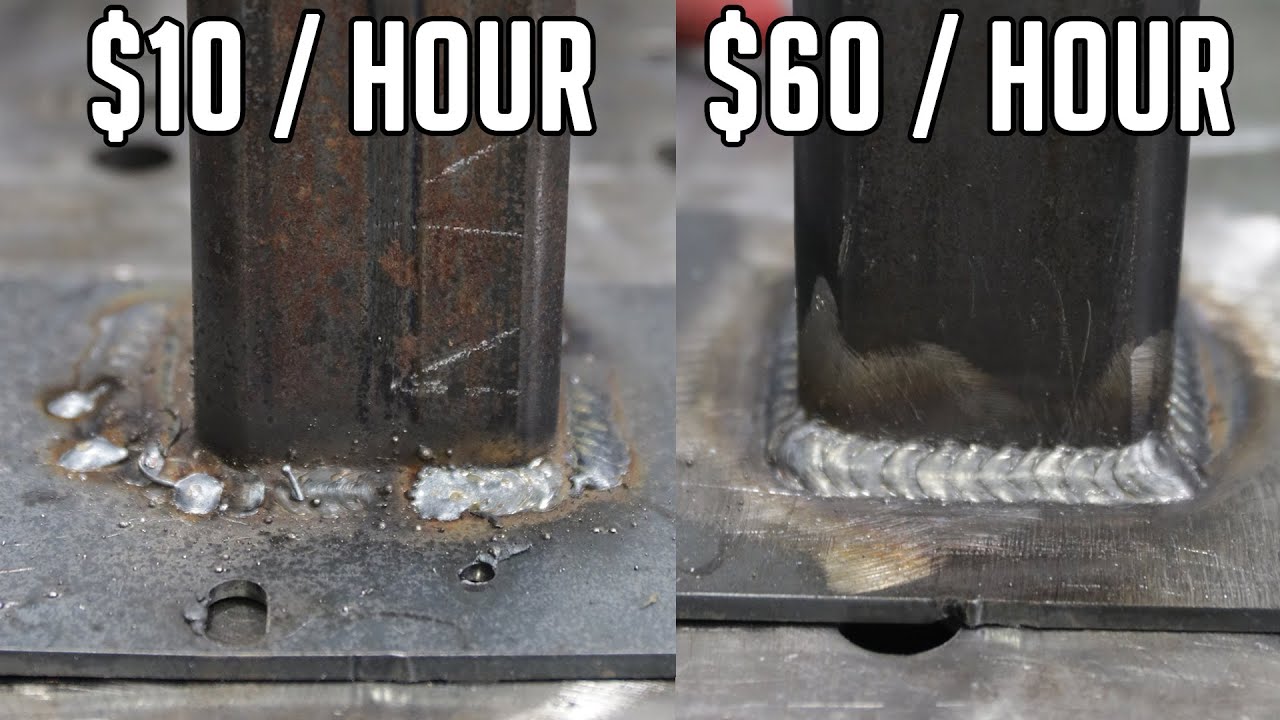Pricing Your Welding Services for Startup Profit
Welding is a craft, but running a welding business is a numbers game. If you’re launching a shop or growing from side gigs to full time, the fastest way to lose money is underbidding work. The good news: a simple, repeatable cost model can tell you exactly what to charge, how to allocate overhead, and how to set healthy margins for MIG, TIG, stick, and specialty/certified jobs. This guide gives you the framework, an example quote, and practical tips to keep your startup profitable.
Start with your true hourly cost
Your price should be based on cost plus target profit. Most new shops only count wages and wire. You need the total burden per productive hour, including overhead and a buffer for rework.
A simple cost model you can copy
Build your shop rate from the ground up:
- Direct labor: your base wage or your draw converted to an hourly rate.
- Labor burden: payroll taxes, workers’ comp, health, retirement (often 20–35% of wage).
- Overhead allocation: rent, insurance, utilities, admin/software, shop truck, marketing, accounting.
- Consumables and gases: wire/rod, shielding gas, tips/nozzles, abrasives.
- Power: electricity or fuel for the welder and compressor.
- Equipment: depreciation and maintenance for machines, positioners, fume extraction, fixtures.
- Quality/admin: time for fit checks, documentation, certs, and packing.
- Contingency: a small percentage for scrap, rework, and surprises.
Example baseline for a one-person startup:
- Wage: $28/hr; burden 30% → labor cost ≈ $36/hr
- Monthly overhead: $3,800 (rent, insurance, utilities, admin/software, truck, marketing)
- Available productive hours: 140/mo (after quoting, sales, errands)
- Overhead per hour: $3,800 ÷ 140 = $27/hr
- Consumables/gas: ≈ $4/hr
- Power: ≈ $2/hr
- Equipment depreciation/maintenance: ≈ $4/hr
- Rework/contingency: 10% applied to cost
Base cost per productive hour = 36 + 27 + 4 + 2 + 4 = $73. Add 10% contingency → $80/hr cost. To hit a 30% profit margin, price per hour = Cost ÷ (1 − Margin) = 80 ÷ 0.70 = $114.29. Round to a clean $115/hr shop rate.
For field work, add travel and truck costs (fuel, mileage, mobilization). You may land between $135–$165/hr depending on drive time and site conditions.
Margin vs. markup (don’t confuse them)
- Markup % = (Price − Cost) ÷ Cost
- Margin % = (Price − Cost) ÷ Price
If you want a 30% margin, do not just add 30% to cost. Use Price = Cost ÷ (1 − 0.30).
Allocate overhead the smart way
Overhead allocation makes or breaks small shops. Choose a denominator that reflects real capacity so your rate isn’t artificially low.
- Use productive hours, not paid hours. If you can weld billable work ~70% of your time, only those hours carry the overhead.
- Recalculate quarterly. Rent and insurance change; so does utilization.
- Consider separate rates: shop vs. field, carbon steel MIG vs. specialty TIG, or code work that needs extra QA.
- Heavy equipment? Create a machine hourly add-on for positioners, CNC plasma, or a big generator.
From RFQ to quote: a practical workflow
A consistent quoting process keeps prices accurate and defensible.
- Define scope and acceptance criteria: material spec, weld symbols, finish, tolerances, and any code (AWS D1.1, D1.2, ASME IX, B31.3). Confirm NDT/inspection (VT, PT, MT, RT) and who pays.
- Break down tasks: cut/prep, fit-up, fixturing, welding, interpass cleaning, straightening, grinding, QA, documentation, packaging.
- Estimate time: separate arc time from handling/fit-up. Production MIG (GMAW) might see 30–50% arc time; TIG (GTAW) often 15–30%; stick (SMAW) varies with change-outs.
- Use process data: deposition rates and travel speeds. Pulse MIG and metal-core boost inches per minute and reduce spatter rework; TIG is slower but higher quality.
- Material and buyouts: steel, stainless, aluminum, fasteners, hardware, machining, laser cut parts. Apply material markup to cover sourcing and risk.
- Consumables/gas: wire/rod usage, shielding gas CF, contact tips/nozzles, flapper wheels. Estimate by length of weld and process.
- Equipment and tooling: rental or add-on rate for positioners, rotators, purging kits.
- Travel/mobilization: windshield time, load-in/out, per diem if overnight.
- Risk and contingency: tight tolerance, thin stainless, out-of-position welds, and poor drawings all warrant extra buffer.
Worked example: quoting a MIG frame job
Job: Fabricate 12 mild-steel frames, 18 × 24 in., 2 × 2 × 0.125 wall A500. Four 3/16 in. fillet welds per corner, GMAW with 90/10 Ar-CO2, light flap-wheel clean, powdercoat-ready. Customer supplies cut parts.
- Assumptions
- Shop rate: $115/hr (from the cost model above)
- Consumables and supplies charged at estimated cost + 20% markup
- No special certification or NDT
- Time estimate
- Fit-up/fixturing: 5 min per frame → 60 min
- Welding: 6 min per frame (pulse MIG, minimal spatter) → 72 min
- Clean/QA/pack: 3 min per frame → 36 min
- Total direct time: 60 + 72 + 36 = 168 min = 2.8 hours
- Add 15 min shop admin → 3.1 hours billable
- Consumables/material at cost
- Wire: ~1.5 lb ER70S-6 @ $3.00/lb → $4.50
- Gas: ~50 CF @ $0.15/CF → $7.50
- Tips/nozzles/abrasives → $12.00
- Shop supplies → $5.00
- Total consumables cost: $29.00; with 20% markup → $34.80
- Price build
- Labor: 3.1 hr × $115/hr = $356.50
- Consumables (with markup): $34.80
- Round and add 5% contingency: ≈ $20
- Quoted price: $356.50 + 34.80 + 20 = $411.30 → $415 flat
- Implied margin check
- Internal cost of hours: 3.1 hr × $80/hr cost = $248.00
- Consumables at cost: $29.00
- Total cost ≈ $277.00
- Margin: (415 − 277) ÷ 415 ≈ 33%
For stainless TIG (GTAW) or code work, expect lower inches per hour and more QA. Your time increases, and your rate should include the extra documentation load. It’s common to quote 25–40% margin on certified work because the risk and rework cost are higher—even if the win rate is lower.
Margins by job type (what to target)
- Production MIG (GMAW) carbon steel: 15–25% margin on competitive, repeatable work
- Custom/one-off shop work: 25–35% margin
- Field welding (SMAW/FCAW/GMAW): 35–50% margin (site risk, downtime, travel)
- Stainless/aluminum TIG (GTAW): 30–45% margin
- Certified/code work (AWS D1.1/D1.2, ASME IX, B31.3): 25–40% margin, depending on documentation/NDT
- Prototype/R&D: 40–60% margin (unknowns and iterations)
These are ranges, not rules. Track your actual hours and adjust on the next quote.
Technology and certification that affect price
New tech that protects profit
- Advanced GMAW processes: pulse MIG, RMD, and CMT reduce spatter, heat input, and rework—translating to fewer abrasive discs and faster throughput.
- Metal-cored wire: higher deposition and travel speeds on clean steel; great for long fillets.
- Positioners/rotators: convert out-of-position welds to flat, increasing IPM and consistency.
- Portable inverters and battery packs: efficient field welding, less generator fuel and setup time.
- Digital weld logging and parameter locks: supports repeatability and certification recordkeeping.
Certification and documentation costs
- WPS/PQR development: time for procedure setup, test coupons, bend/RT/PT fees.
- Welder performance qualification: coupons, CWI time, lab fees, continuity tracking.
- Code compliance: traceability, heat lots, inspection reports, traveler packets.
- NDT: visual (VT) in-house, PT/MT/RT by third parties—add scheduling time and fees.
Build these into your quote as separate line items or as a certification adder to your hourly rate. Don’t forget ongoing costs to maintain continuity and requalifications.
Common underbidding traps (and how to avoid them)
- No minimum charge: Set a shop minimum (e.g., one hour or $150). Small jobs kill margins without it.
- Unpaid mobilization: Bill for load-in/out, drive time, and site delays. Include a weather clause for field work.
- Scope creep: Use change orders. Any change in drawings, material, or acceptance criteria triggers a requote.
- Ignoring non-arc time: Fit-up, tacking, cleaning, and QA often exceed arc time. Estimate them explicitly.
- Consumables leakage: Track gas CF, tips, nozzles, and abrasives. Add a supplies line when it’s significant.
- No rework buffer: Add 5–10% contingency unless the job is extremely repeatable.
- Wrong denominator: Base overhead on productive hours, not a 40-hour fantasy week.
- Underestimating TIG: GTAW is slower and prep-sensitive. Quote for cleanliness, purge, and access.
- Certification time: Documentation, WPS, and inspection take hours—price them.
- Not tracking actuals: Time every job. Update your rates and estimates based on real data.
Key Takeaways
- Build a shop rate from total hourly cost, not just wages—include overhead, consumables, equipment, and a rework buffer.
- Use margin math: Price = Cost ÷ (1 − Margin). Don’t mistake markup for margin.
- Quote from a process: scope, tasks, timed estimates, material/buyouts, risk, and certification load.
- Target margins by job type and process; adjust after tracking actuals.
- Invest in productivity tech and document certification costs—they pay for themselves in reduced rework and stronger quotes.
Conclusion
Profitable pricing isn’t guesswork. With a simple cost model, disciplined overhead allocation, and a repeatable quoting workflow, your welding startup can bid confidently, win the right jobs, and keep the lights on. Track hours, refine your rates, and let data—not hope—set your price.



